Hudson Valley is just 82 miles north of New York City, and yet a world away. With small towns, historic sites and lush land, it’s where many suburbanites have gone for decades to escape the city. Here, we peeked into the life of royalty: Franklin and Eleanor Roosevelt (old money American royalty), Frederick and Louise Vanderbilt (new money American royalty), and Anthony Bourdain (food royalty) at the CIA: the Culinary Institute of America (not the other CIA).
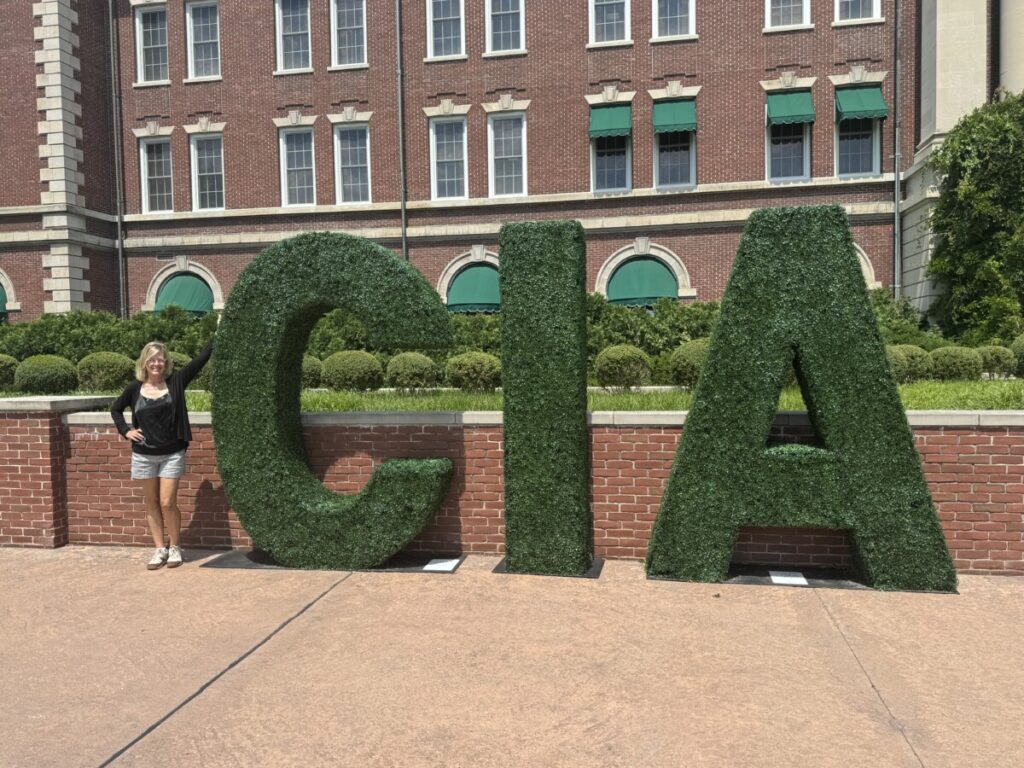
The Franklin D. Roosevelt Presidential Museum and Library (our 9th of 13 total such museums) was a fascinating peek into the life of FDR, the only President to serve more than two terms, leading the country through not only the Great Depression but also WWII. It was the first Presidential Library (his idea) and the only one to be built and used by a sitting President.
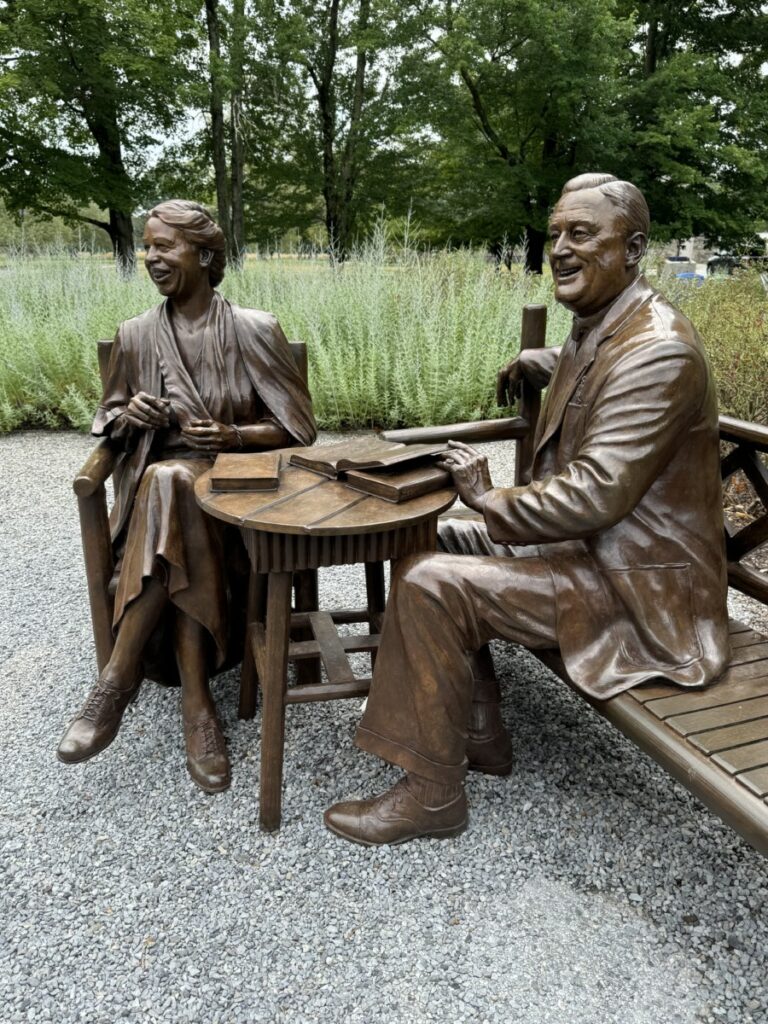
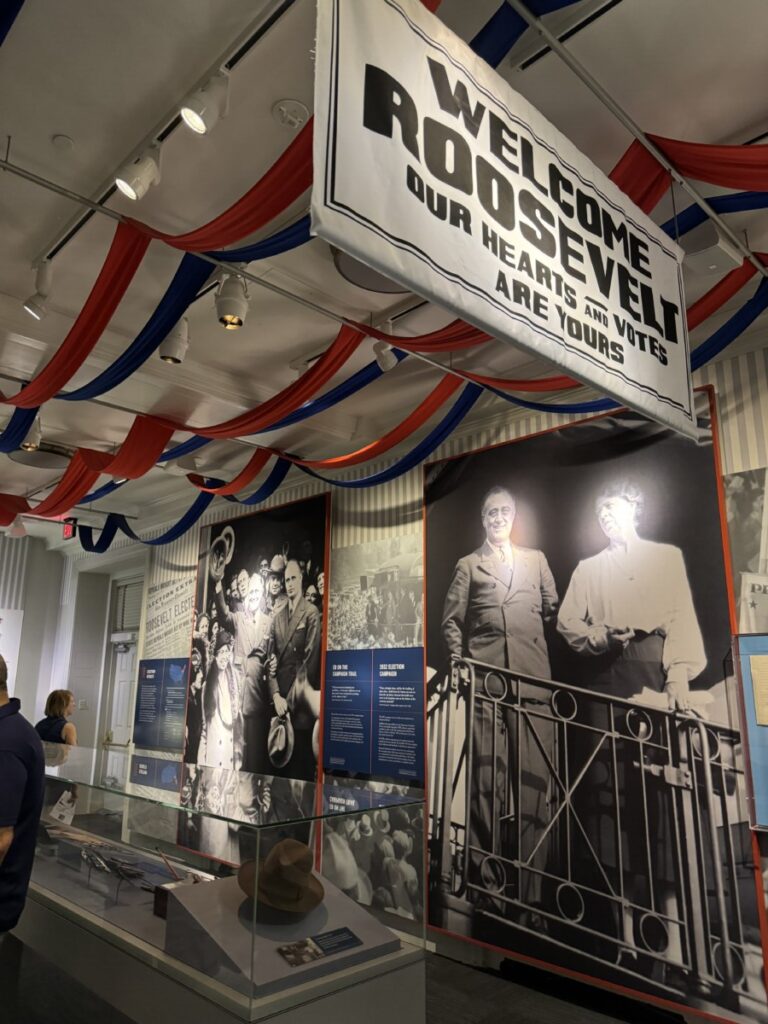
Presidential libraries are always built using private funds, even though the documents and items stored there belong to the nation. FDR’s was set in a bucolic farm field, unlike others which are in busy city centers (JFK in Boston, Jimmy Carter in Atlanta, etc.).
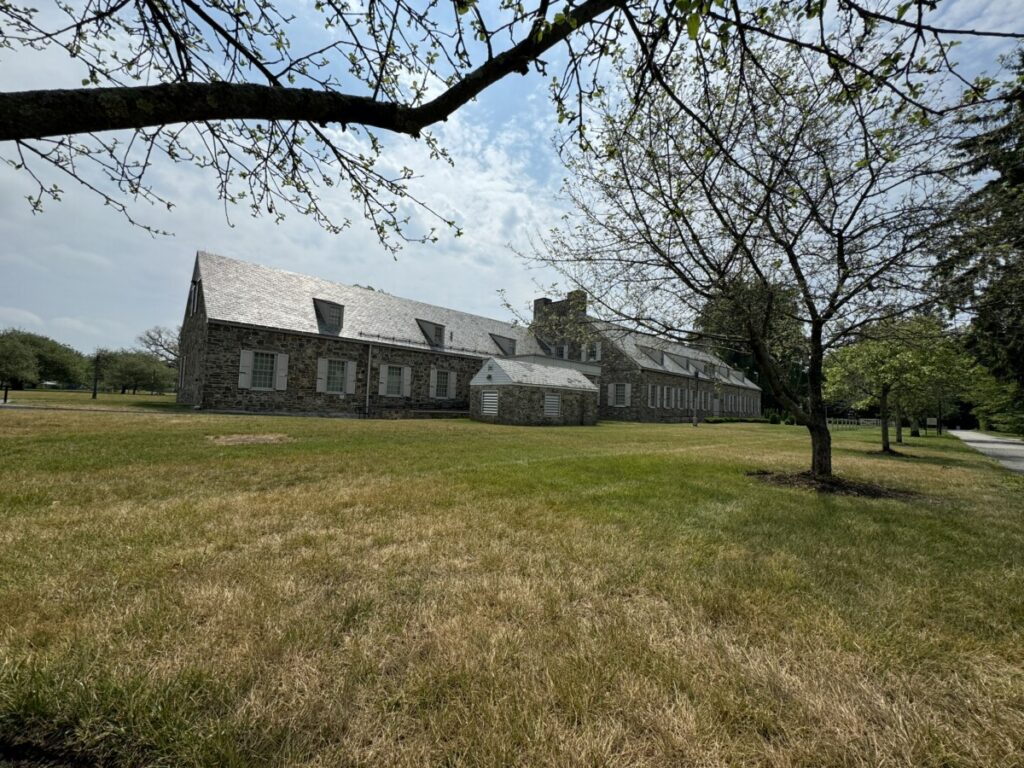
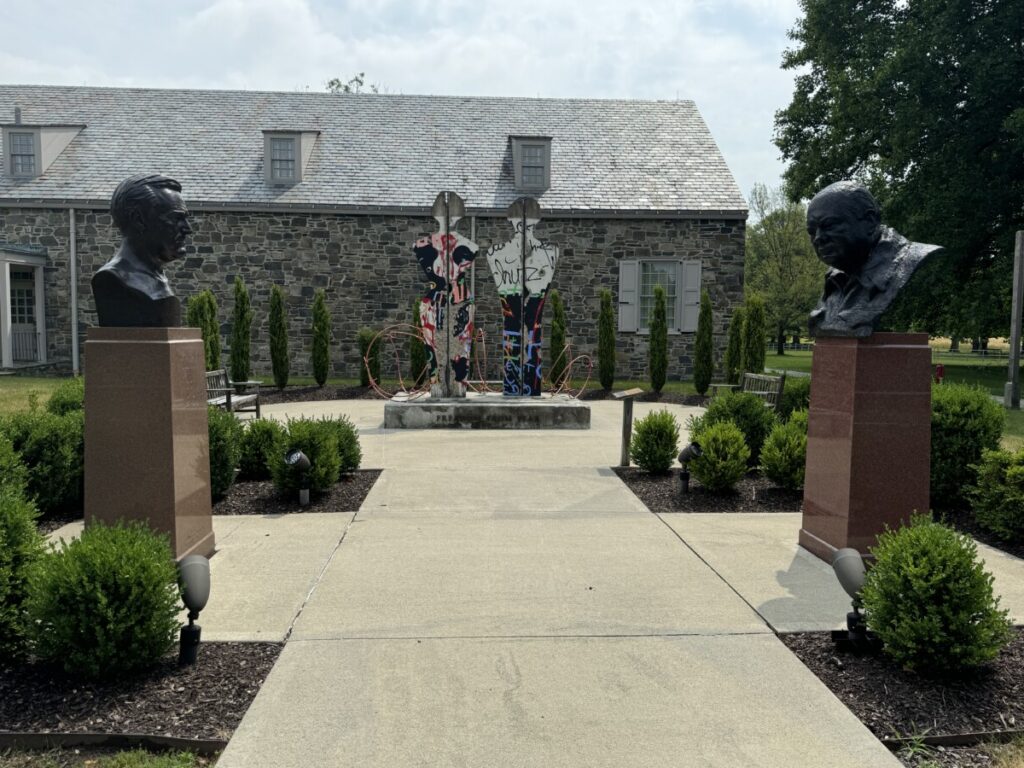
Interestingly, although the Library contains over 130,000 photos of FDR, there are only 4 of him in a wheelchair. After contracting polio at the age of 39, he famously dragged himself along this country road on his 400-acre property as part of his rehab.
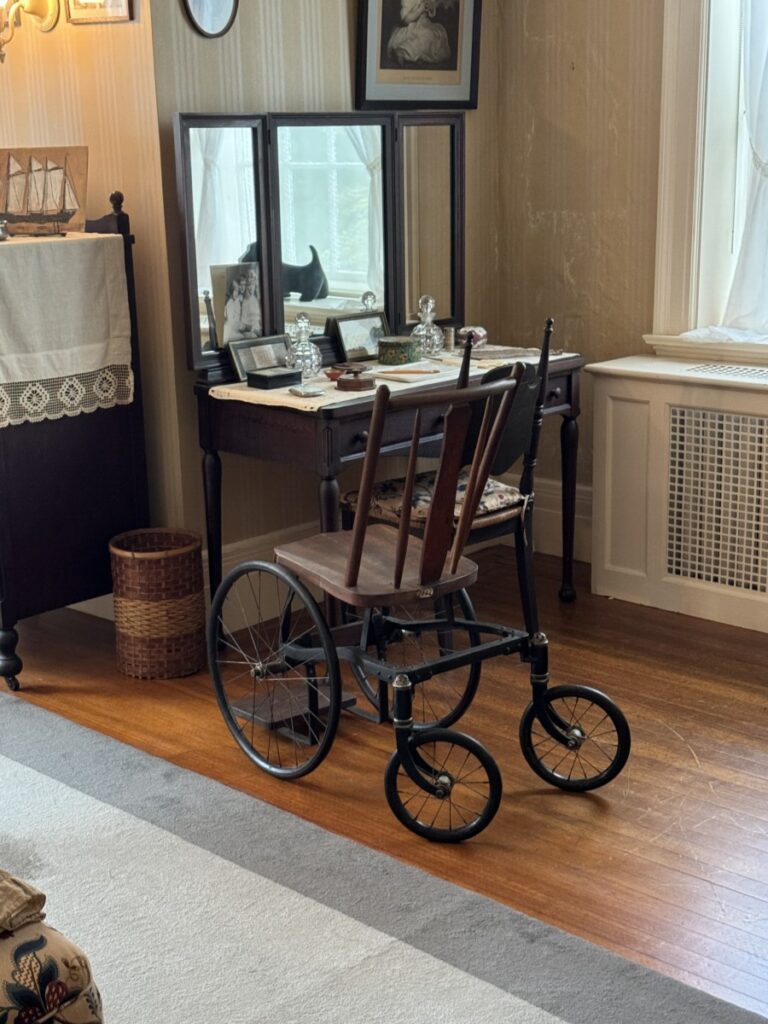
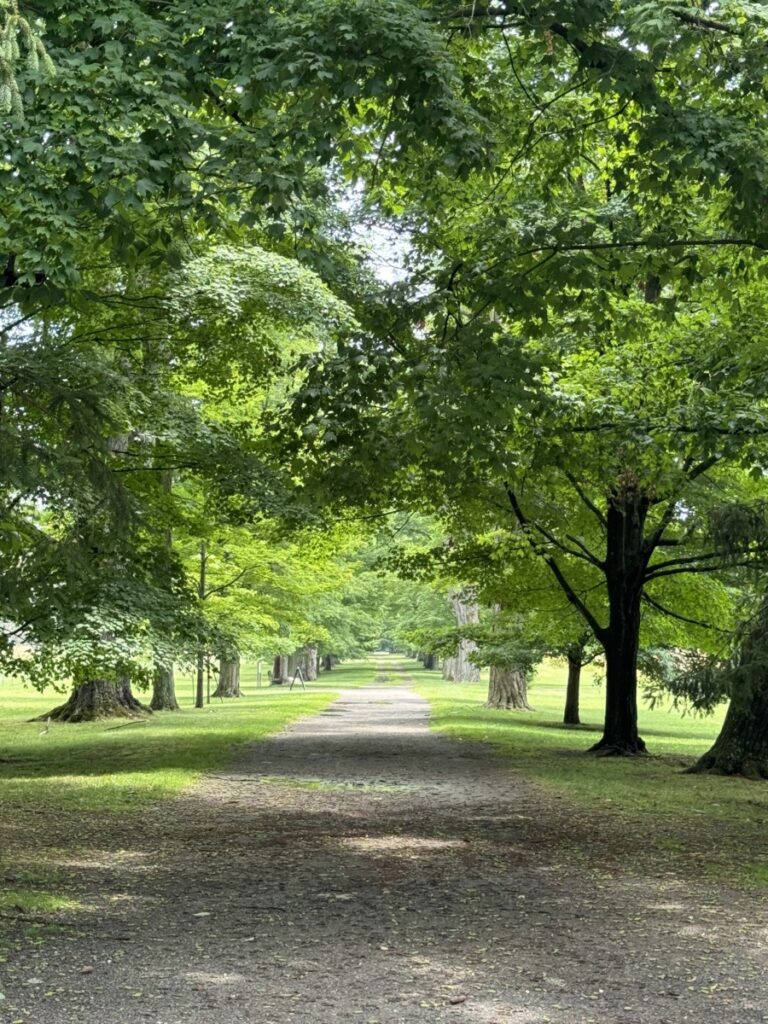
The Library was built on the grounds of Springwood, FDR’s lavish birthplace and childhood home, and the one to which he returned with his new bride, Eleanor, after they were married. They lived there with his domineering mother, Sara, who ruled the roost and generally made Eleanor crazy.

Dark and opressive (in my opinion), it further contained a lifesize statue of FDR in the living room because Sara was so proud of her son; the celebrity version of your kid’s finger painting hanging on the fridge. Queen Elizabeth and other celebrities of the day stayed here with the Roosevelts.
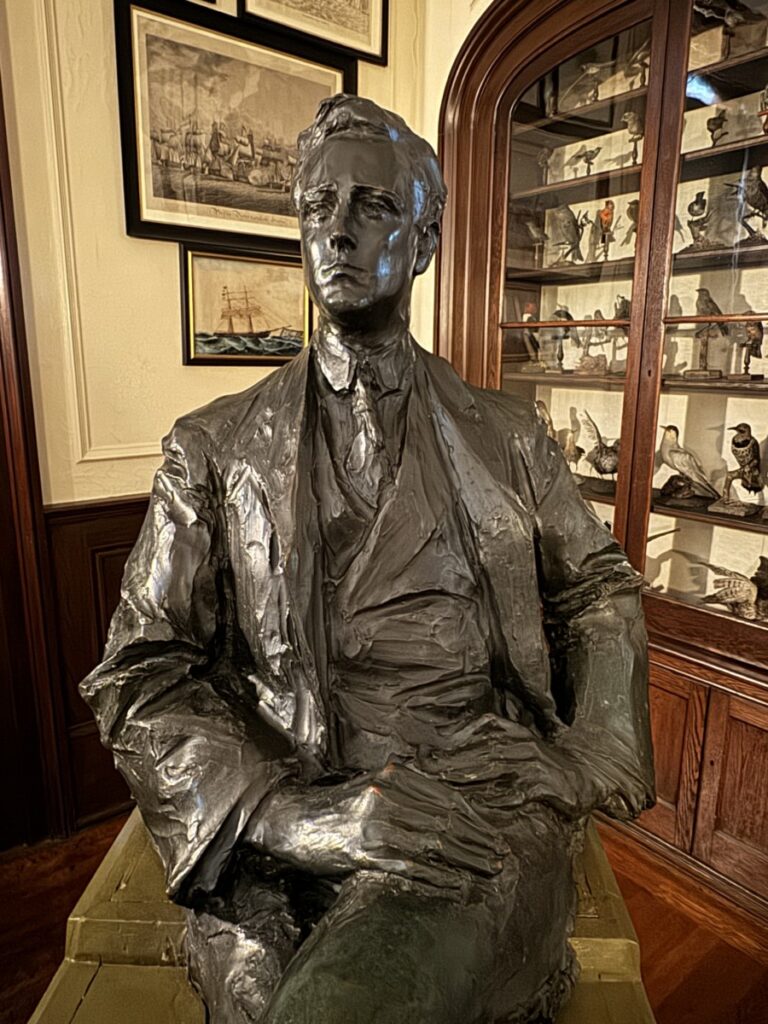

Needing a space of her own (because what wife doesn’t, and a “She Shed” wasn’t a thing yet), Eleanor maintained her own residence just down the road at a simple cottage called Val-Kill. Originally an experimental furniture factory that Eleanor started with two friends, it became her own personal retreat in later years, and her permanent home after FDR’s death.
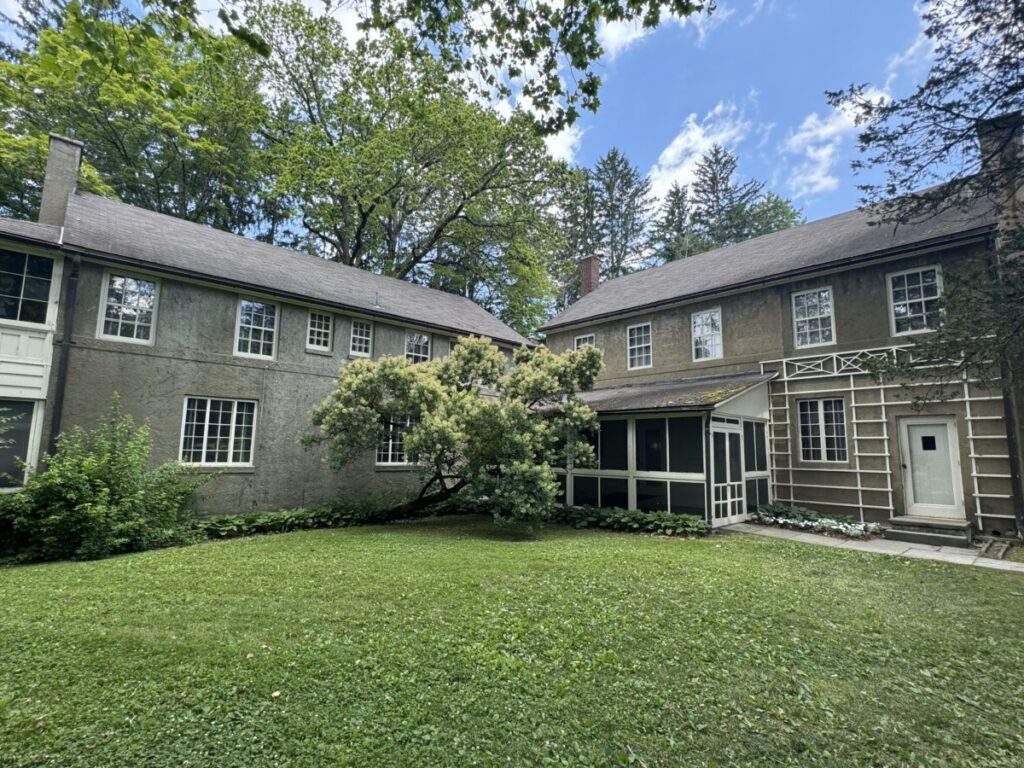
Val-Kill is a strange name, but everything around here is called *something*-kill: Bushkill, Sawkill, Fishkill — though strangely nothing called Buzzkill, which is a real missed opportunity to be sure. Turns out that a “kill” in this area means riverbed or water channel, derived from a Dutch term from when this area was better known as New Netherland.
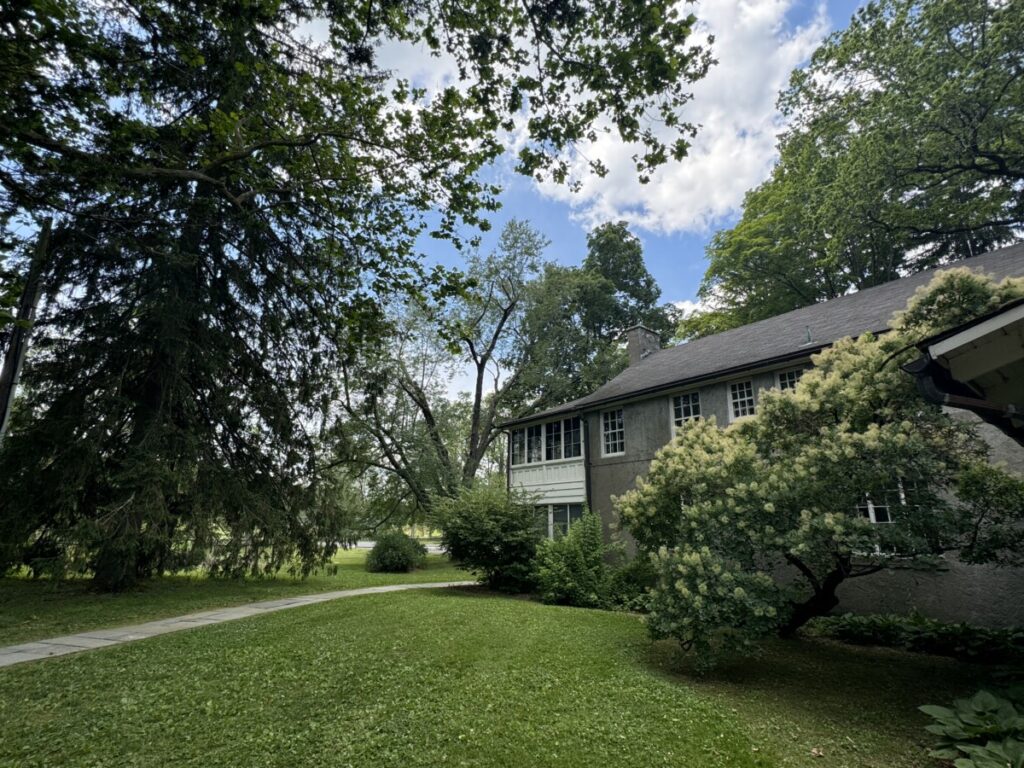
Eleanor’s Val-Kill was a casual place where everyone from local students to world leaders, friends and family members were constantly cycling through, and yet many important meetings took place here, including a visit by John F. Kennedy, Jr., to ask Eleanor’s blessing for his Presidential run. With drop ceilings, 70s-style wood paneling and family pix haphazardly strewn about the walls, it was certainly the antidote to Springwood’s oppressive formality.
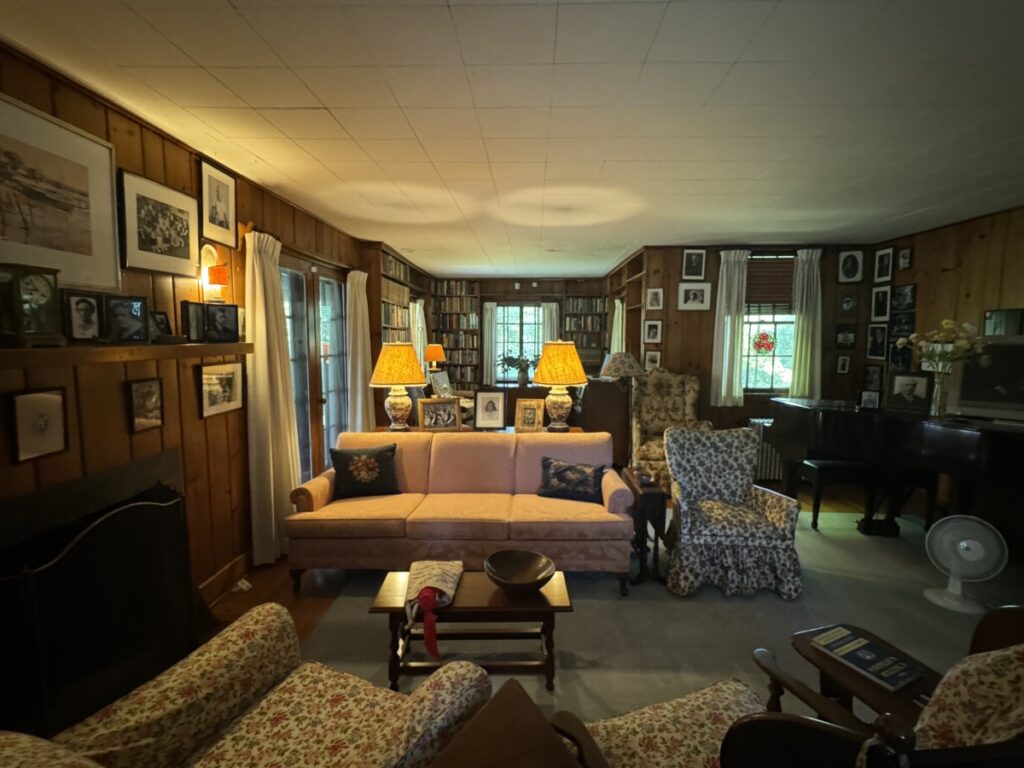
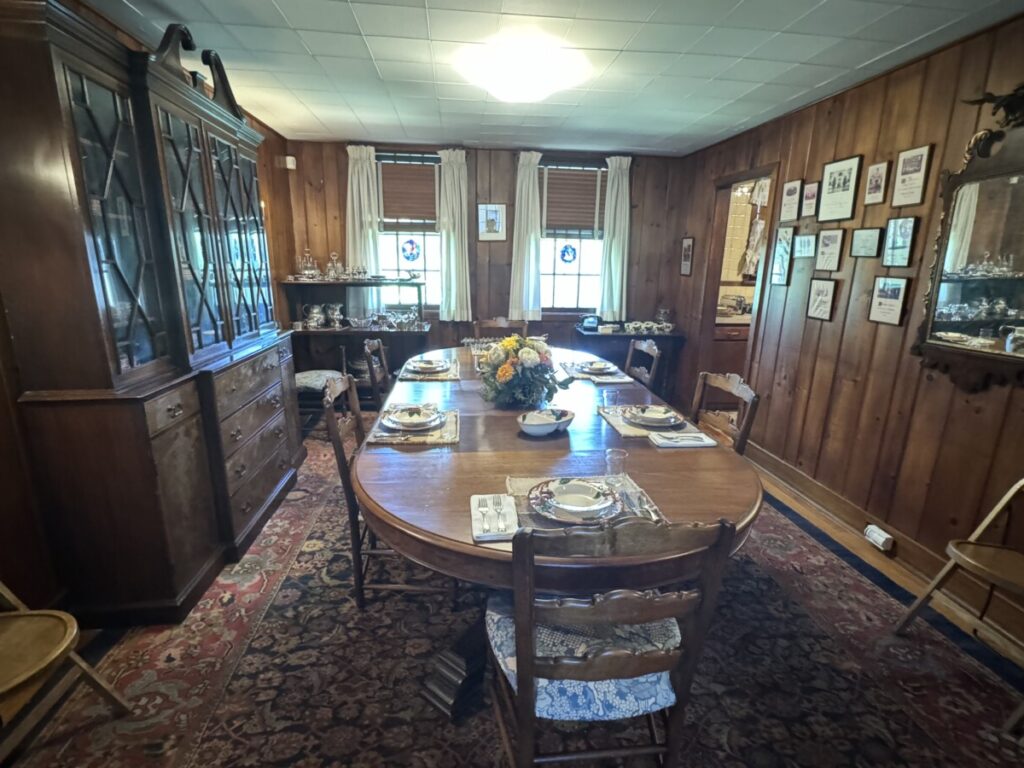
It was normal, for example, at Val-Kill to have FDR, King George of England and Winston Churchill throwing some burgers on the grill and having cannonball contests in this pool. Just another day for the well-connected and extremely social Roosevelts.

The Roosevelts were wealthy, but nothing like some of their neighbors along the Hudson River. The Vanderbilts were the first U.S. family of extreme wealth, and true American aristocracy. Frederick Vanderbilt, one heir to the Vanderbilt fortune, and his wife Louise, maintained a 54-room mansion (one of their four homes) here. He was serious (and seriously shy) and she was a partying social butterfly.
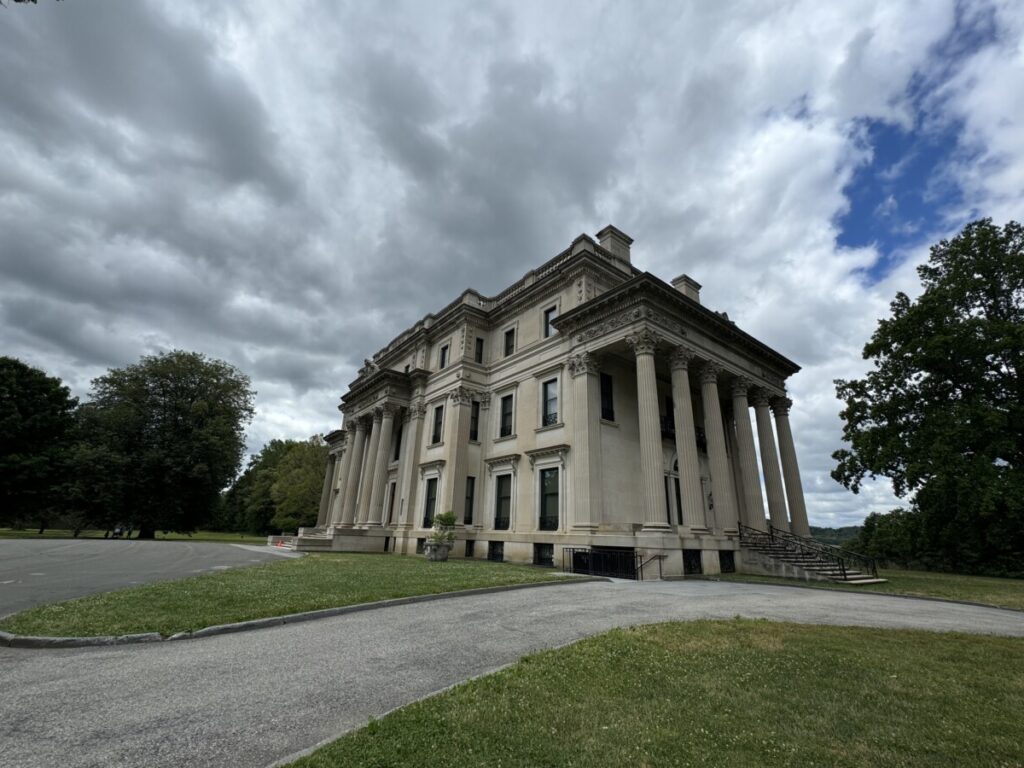

When Vanderbilt was building his mansion, he found out an even bigger place was being built across the Hudson River, poised to ruin his good view. He planned to quash that construction and then found out it was going to be a seminary. Since you can’t quash God, he instead threw $125,000 their way, telling them “at least make it look good.”
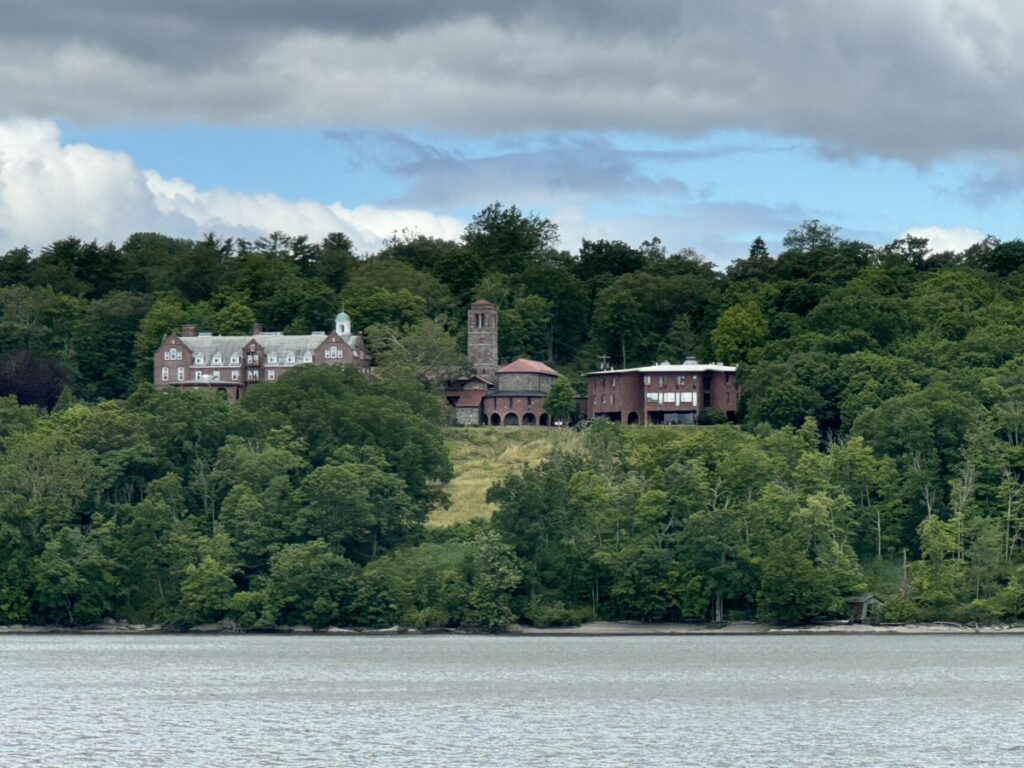
Even today the mansion is fully furnished with the Vanderbilts’ original belongings. Designed by an ever-changing throng of architects and interior designers, the interiors were interesting, to say the least, with every last item selected to scream “WE’RE WEALTHY.”

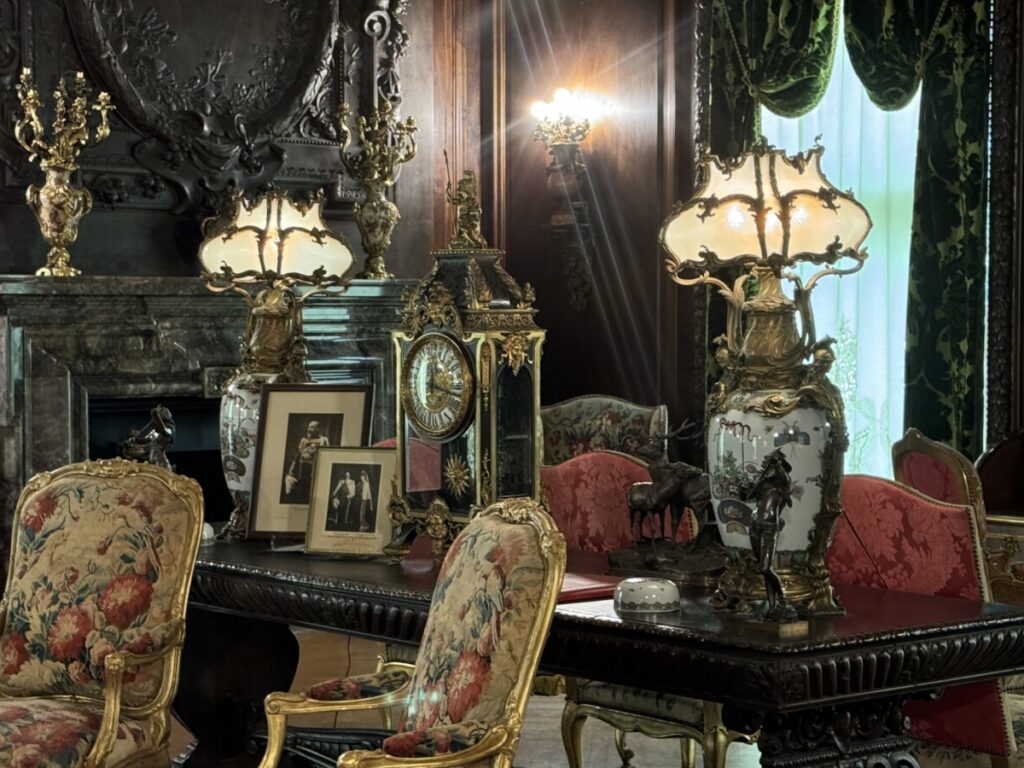
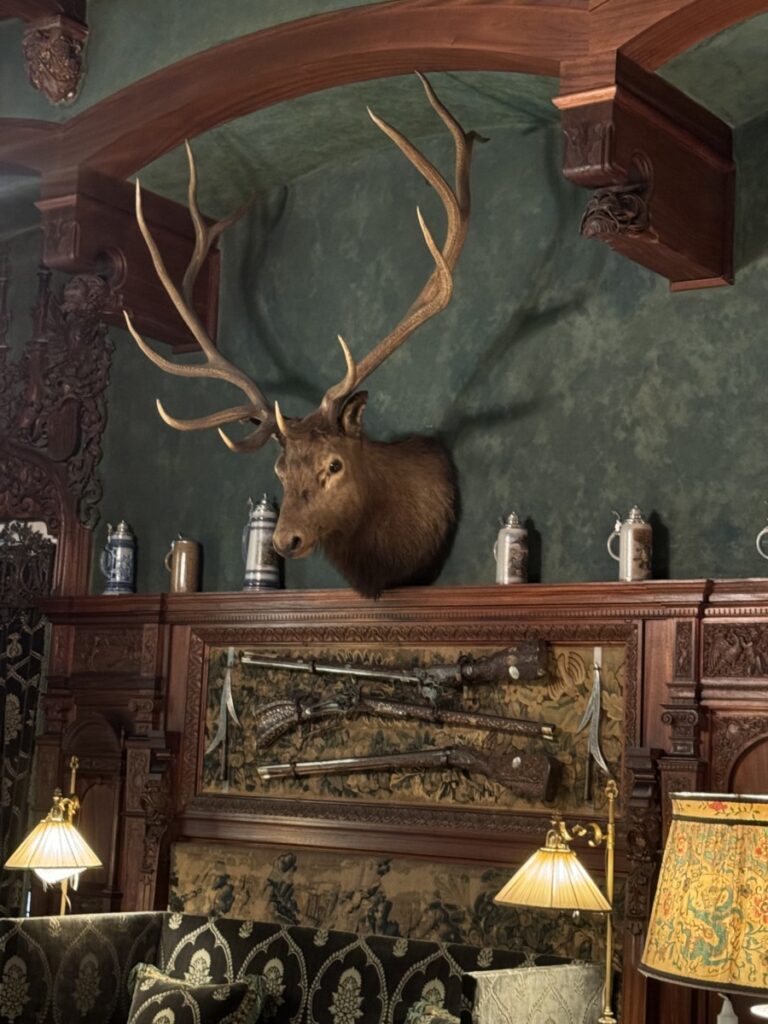

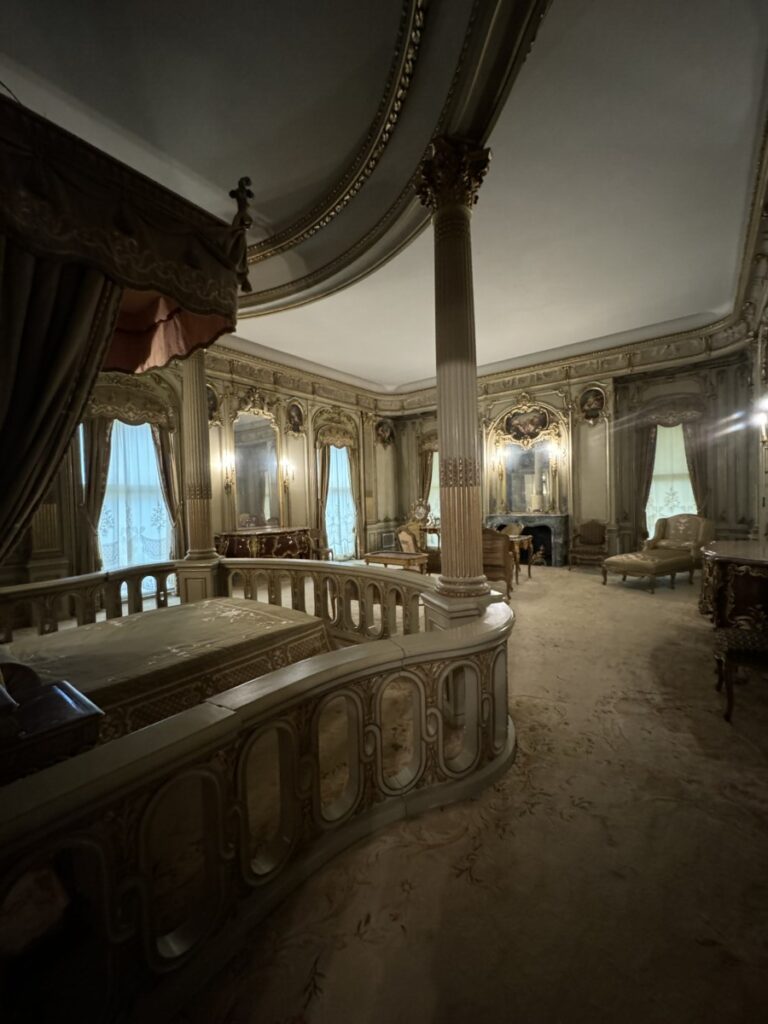

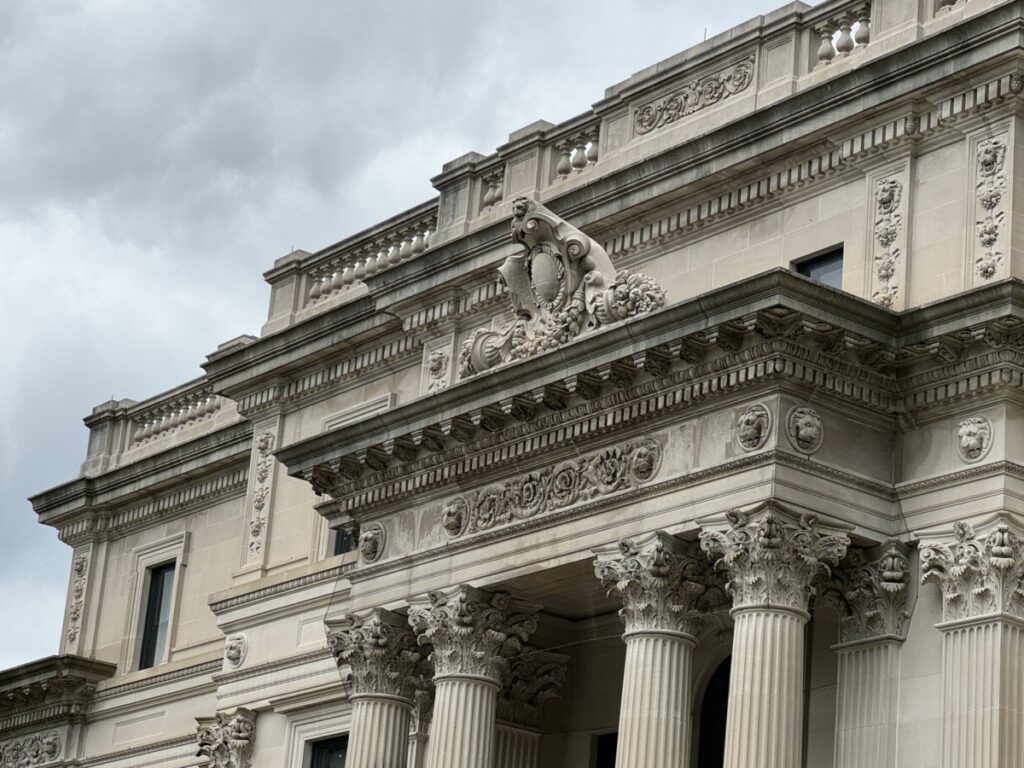
In this area, there are only three driving bridges crossing over the massive Hudson River — but one special walkway. The Walkway Over The Hudson at Poughkeepsie is a 1.28-mile long former railroad route from 1889, which in its current incarnation after being rescued and renovated, is the world’s longest elevated pedestrian bridge.
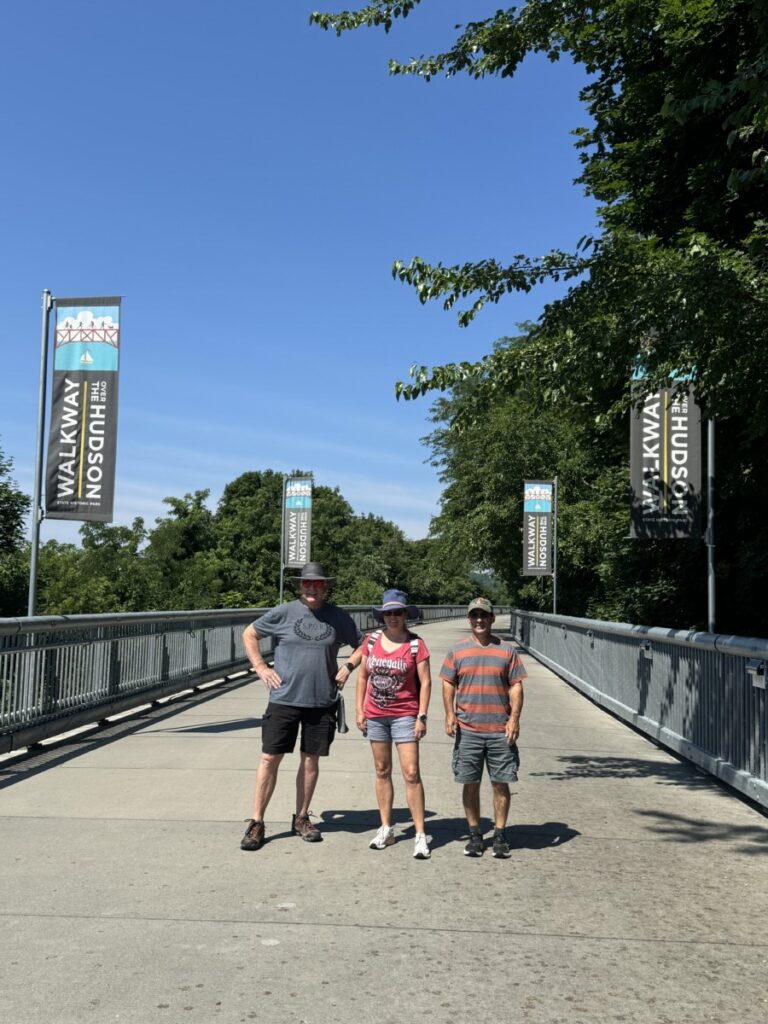
Full of historic photos and information displayed along the route, it offers 360 degree views of the surrounding area and ships passing by, from 212 feet above the Hudson. On either end of the bridge are extended rail-trails that are great for biking. Bonus: dog-friendly, though the extra-toasty weather was not.

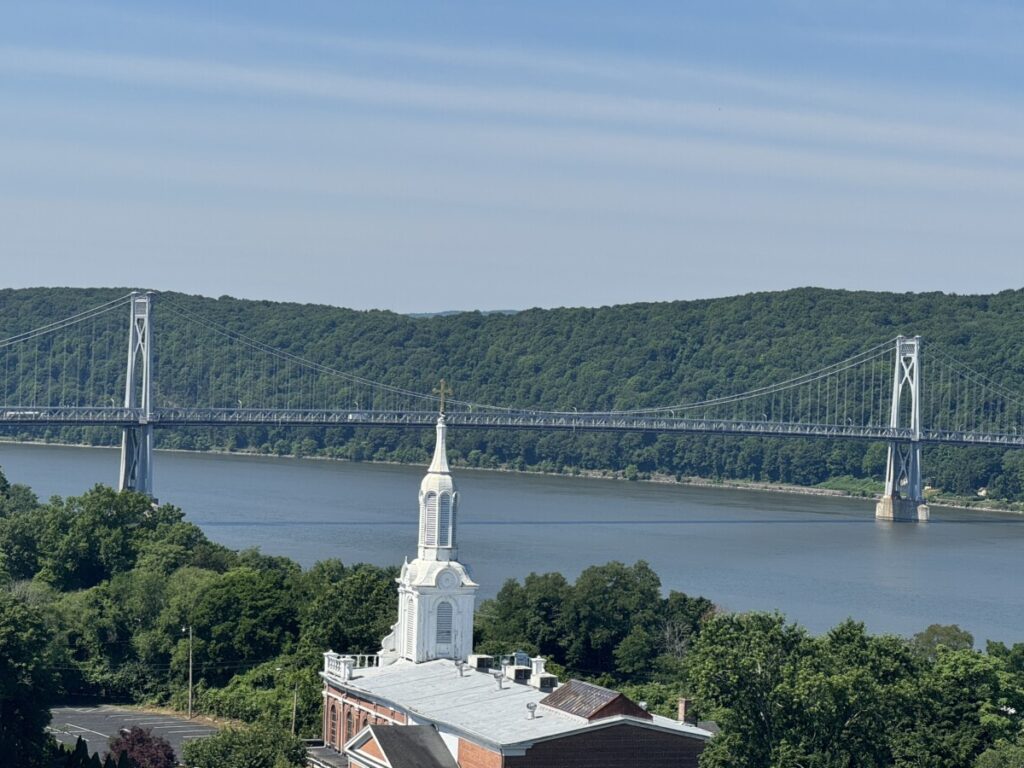
The Culinary Institute of America, our country’s most prestigious culinary arts college, has their flagship campus located here in a former Jesuit seminary — truly one of the most spectacular university settings and frequently listed as one of America’s prettiest college campuses.


Even the interiors are gorgeous, with many of the original seminary details being restored and preserved when the campus was taken over.

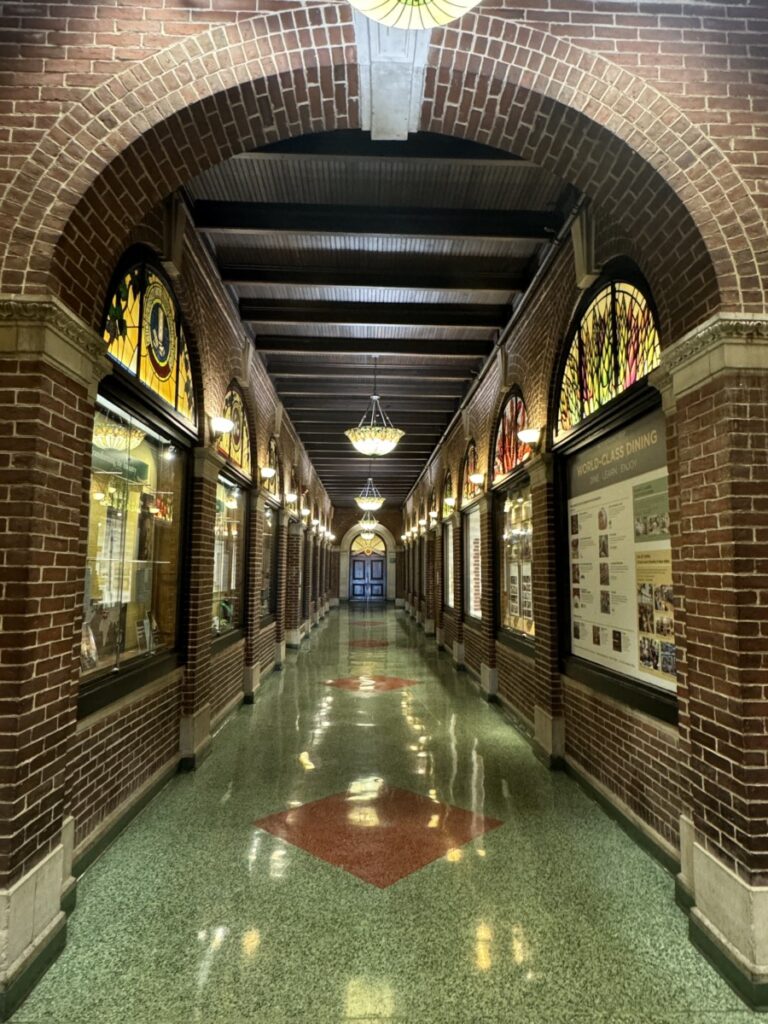
A non-profit private college and culinary school specializing in culinary, baking, and pastry arts education, as well as restaurant management and the business side of food, CIA has 2,100 students bustling around campus in their white jackets.

If you’re a foodie, you’re well aware of CIA — the holy grail of chef education; but they also have classes for the everyday person at their locations in New York, California, San Antonio, and Singapore. The school has a 97% placement rate for their AA, BA and Masters programs, and alumni royalty include their most famous graduate, Anthony Bourdain, as well as a host of Iron Chefs, Master Chefs, Instagram-famous chefs, food truck superstars, and the majority of chefs in all the finest restaurants worldwide.

The campus has a number of restaurants which are run by students as part of their curriculum. We chose American Bounty, primarily because we can’t pronounce French ingredients and so would have made fools of ourselves ordering in other campus restaurants.
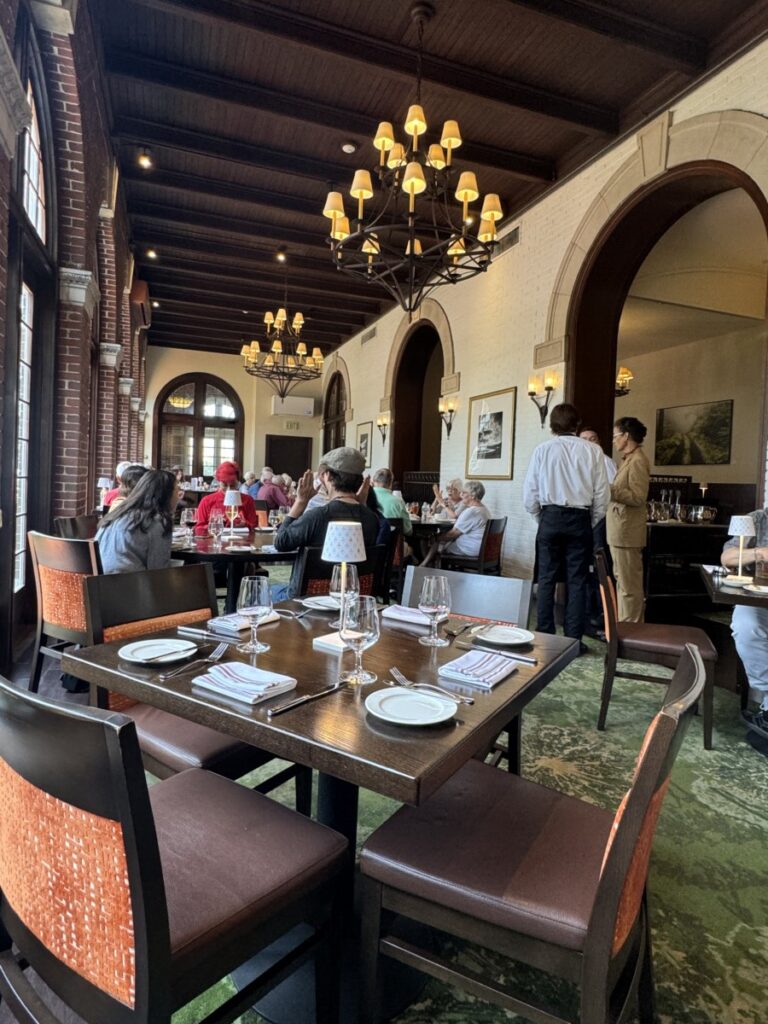
The waiter told us that in this day and age, if people don’t take pictures of their meals, they consider themselves a failure. Not wanting to hurt their feelings, we happily obliged.
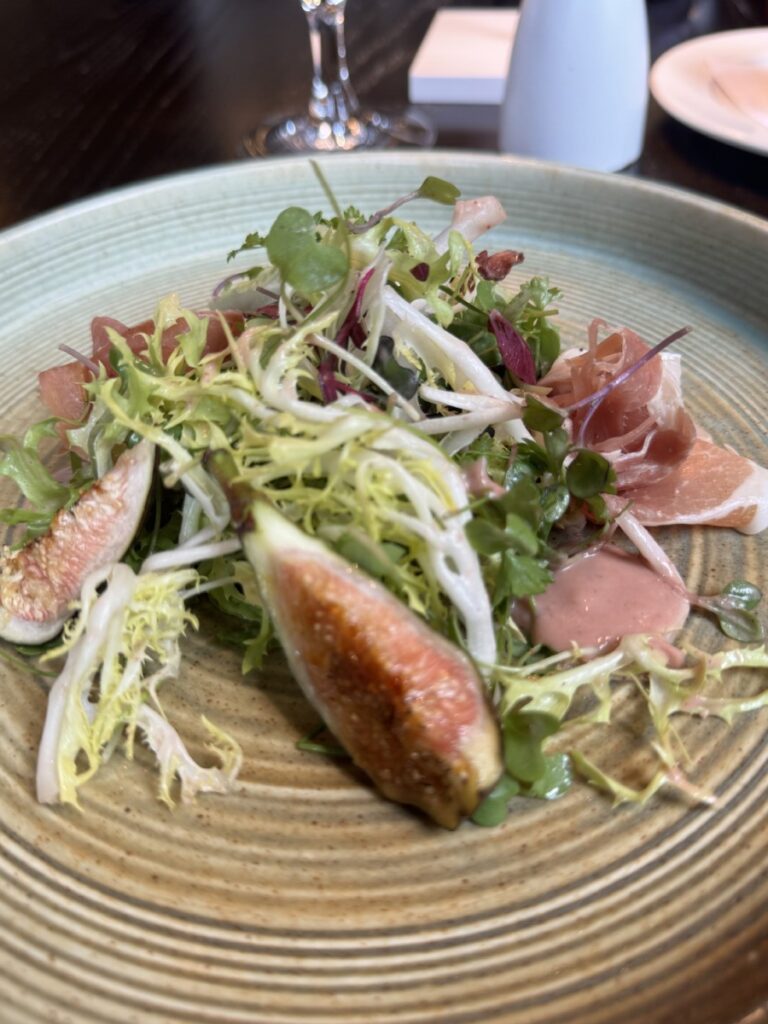
Fig-Honey Vinaigrette, Smoked Hazelnuts, Prosciutto, Castelrosso Cheese

Cauliflower-Parsnip Purée, Marinated Artichokes, Roasted Green Beans, Tarragon Vinaigrette
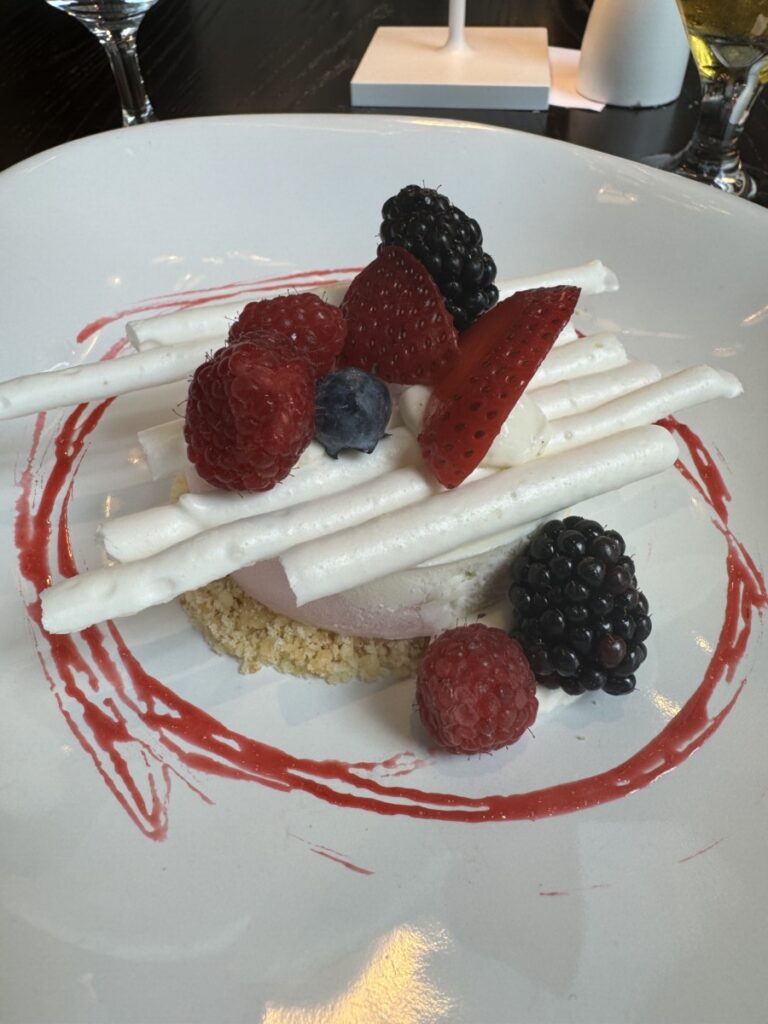
Peach Lychee Sorbet, Local Cream, Meringue, Herb Ice Cream, Summer Fruits
We did a one-hour “CIA Experience” class, that beyond taking us on a quick tour of parts of campus, also had us doing an interactive experiment about taste. By dipping grape halves in various combinations of salty or sweet or acidic factors and experiencing how the flavor would change, we learned that Philip and I are really animals in disguise and need to learn to savor our flavors more as we are shoveling food into our craws.

Beekman Arms, the “oldest tavern in America,” seems not to have been updated in the least since it opened in 1766. They say it in a nicer way: “instead of letting our historical origins fall to the wayside, we embrace them wholeheartedly.” Regardless of this glass-half-full/glass-half-empty analysis, it had the lowest ceilings imaginable, but no longer offer to stable your horse while staying here.
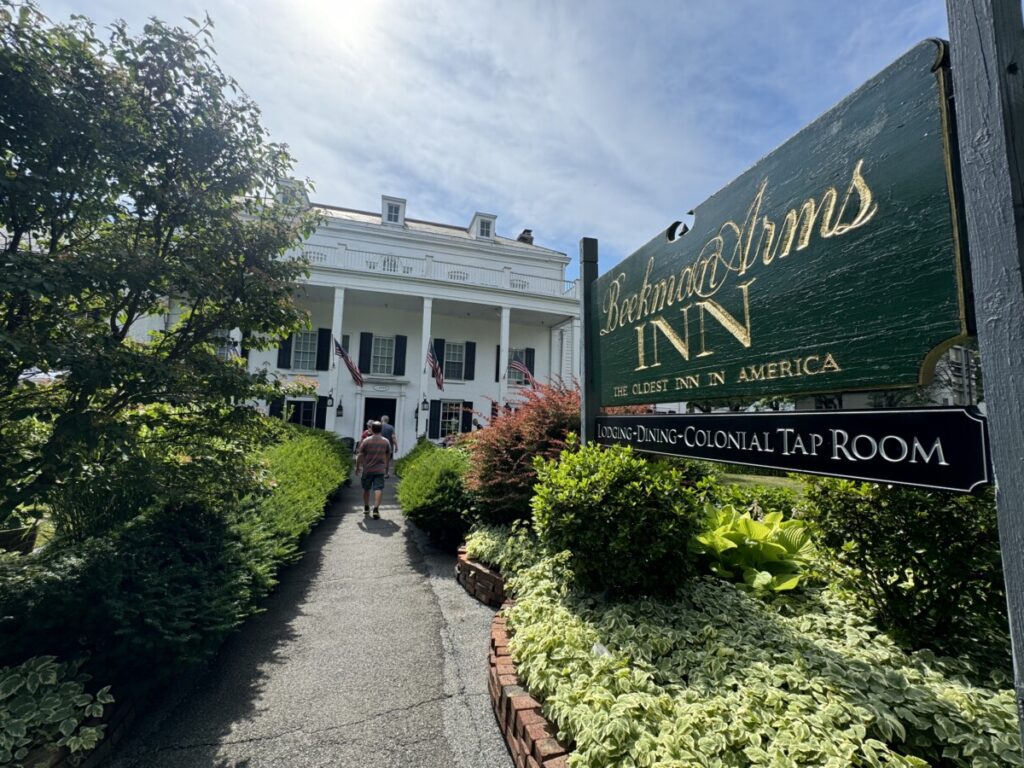
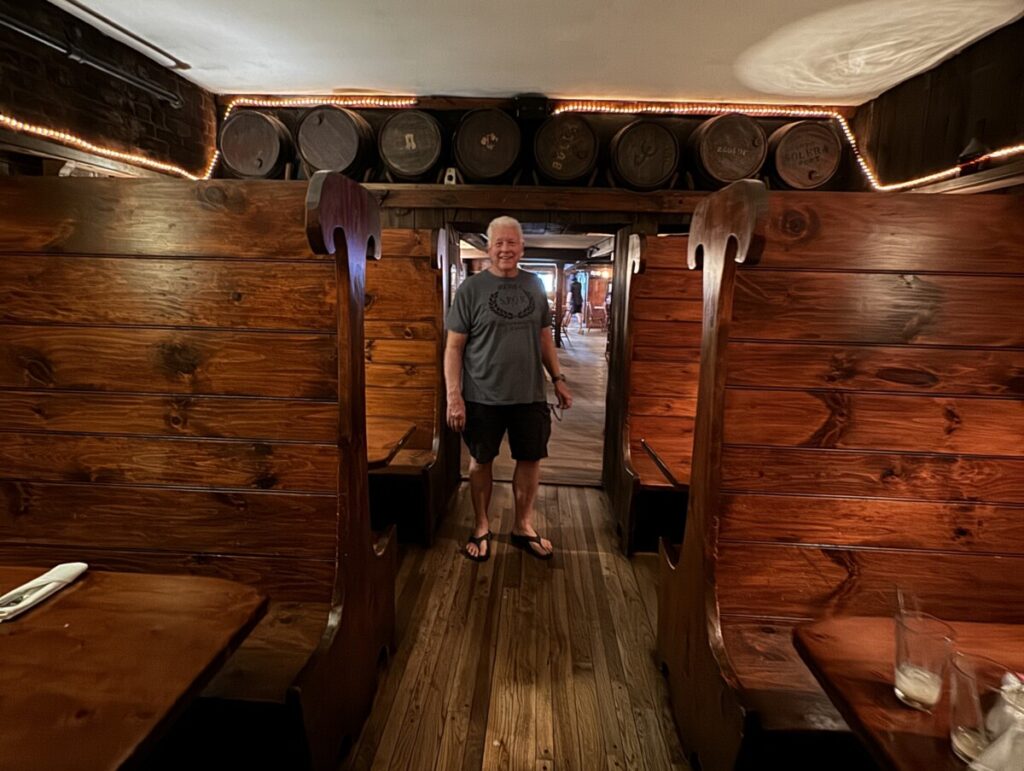
We only scratched the surface of the Hudson Valley, but here’s a shout-out to RV bloggers Mary and Alan of Reflections Around The Campfire, who are from this area and made our planning easy. They are currently on their way to Alaska in their RV, but we’ll be back to deposit ourselves on their doorstep — and the doorstep of other Hudson Valley royalty — another time!
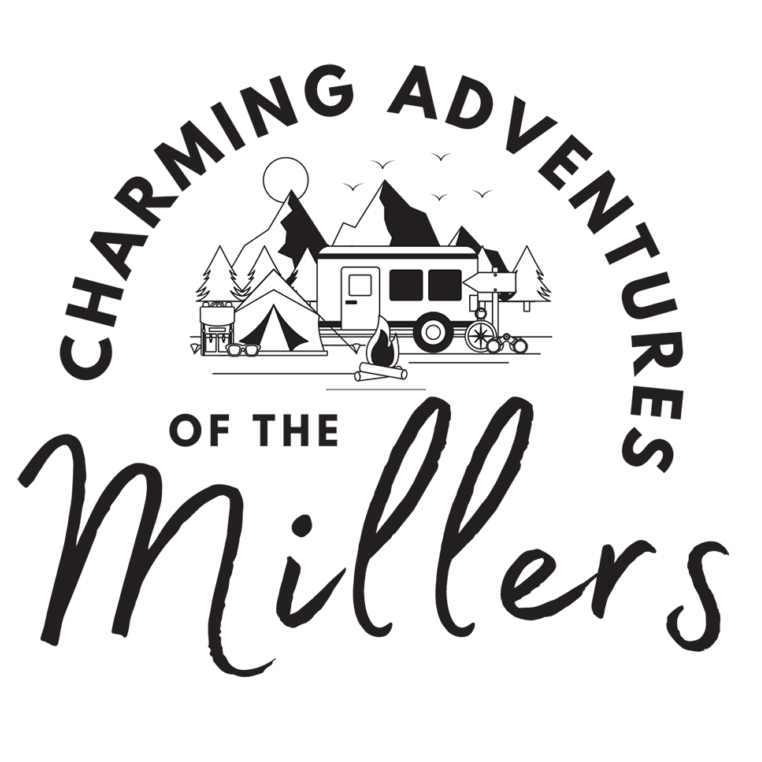
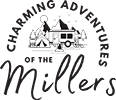
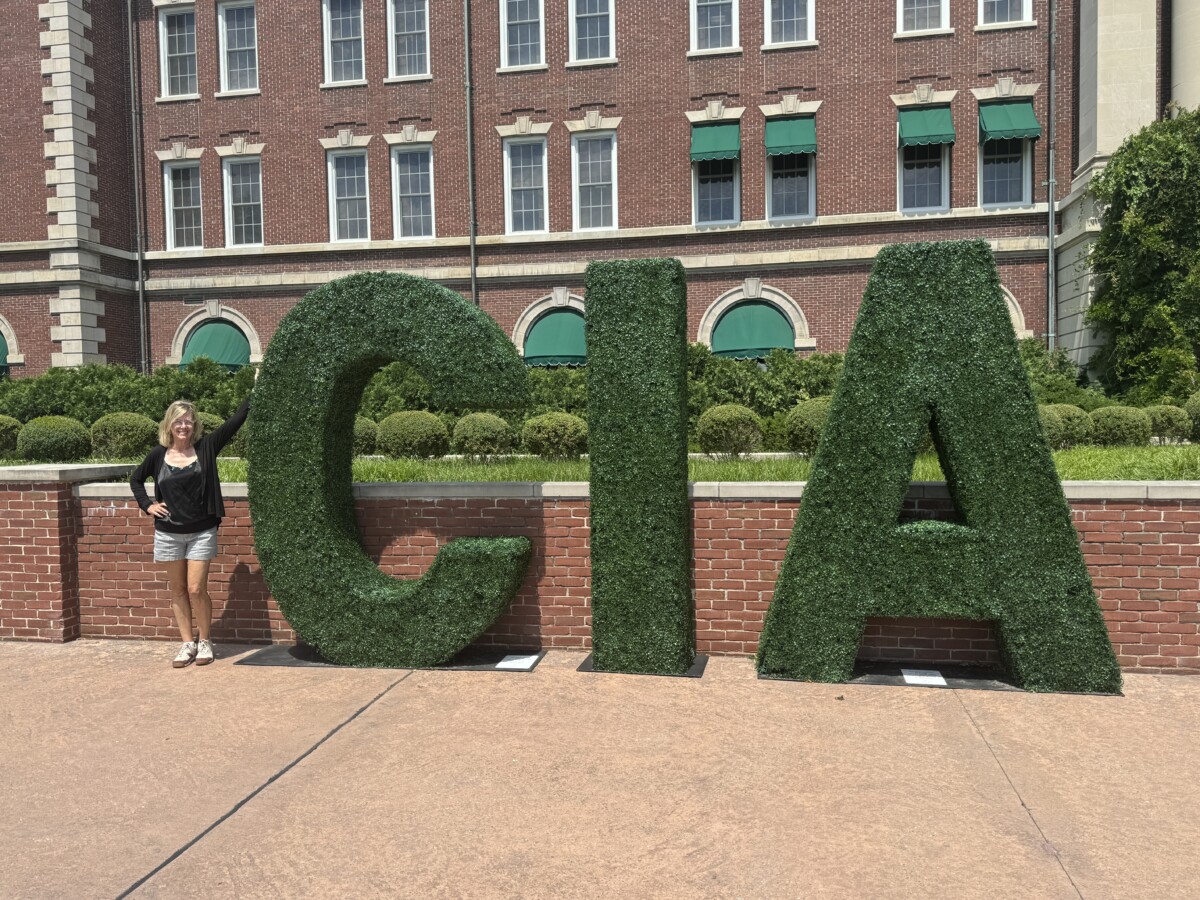
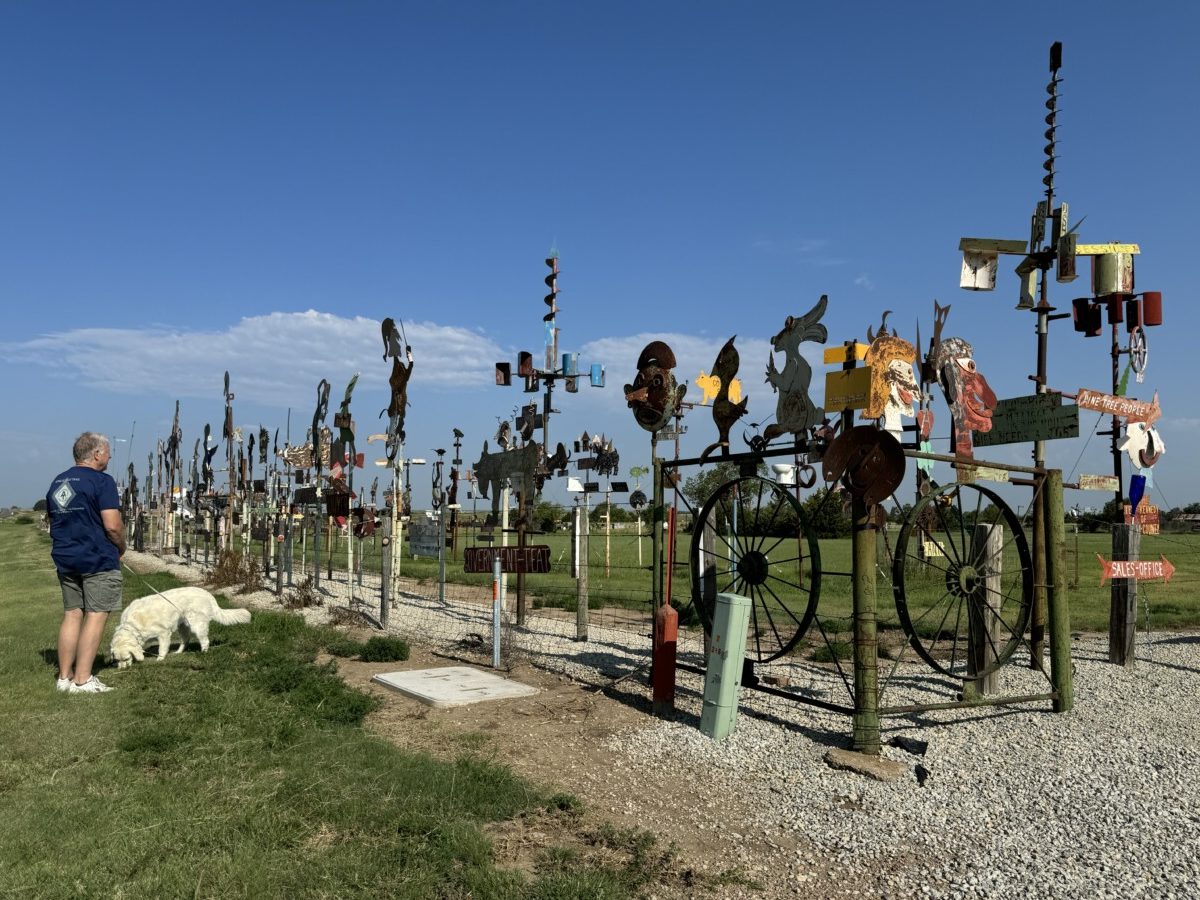


Thanks for the shout out, Tessa – we are SO sorry we missed your visit! And we’re sorry you hit that wicked heat wave. Usually June is a glorious time of year in that neck of the woods. Happy to hear you managed to squeeze in a visit to the Culinary among all of your social visits with royalty. The CIA experience doesn’t come cheap, but it is unique and definitely memorable. Safe travels! Can’t wait to see where you’re off to next!
Another excellent and hilarious post that makes history interesting!!! I’m sure you take just a teeny bit of creative license in your storytelling, and that makes it even better. I can just see Churchill doing cannonballs in the Roosevelt’s pool, LOL. But Eleanor having to live with Mother Roosevelt? Can you imagine? I’ve heard stories of how awful she was.
I want to go to the Culinary Institute of America! Your meal looks fabulous.